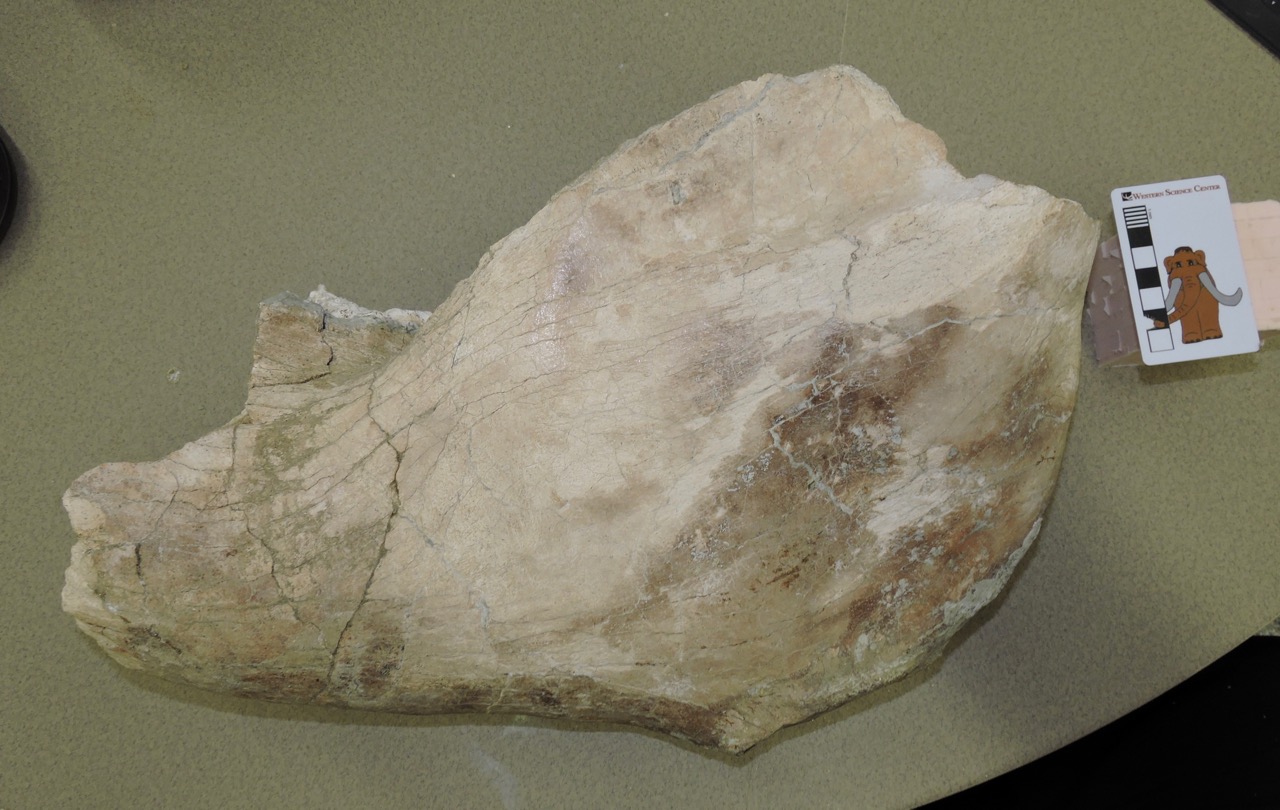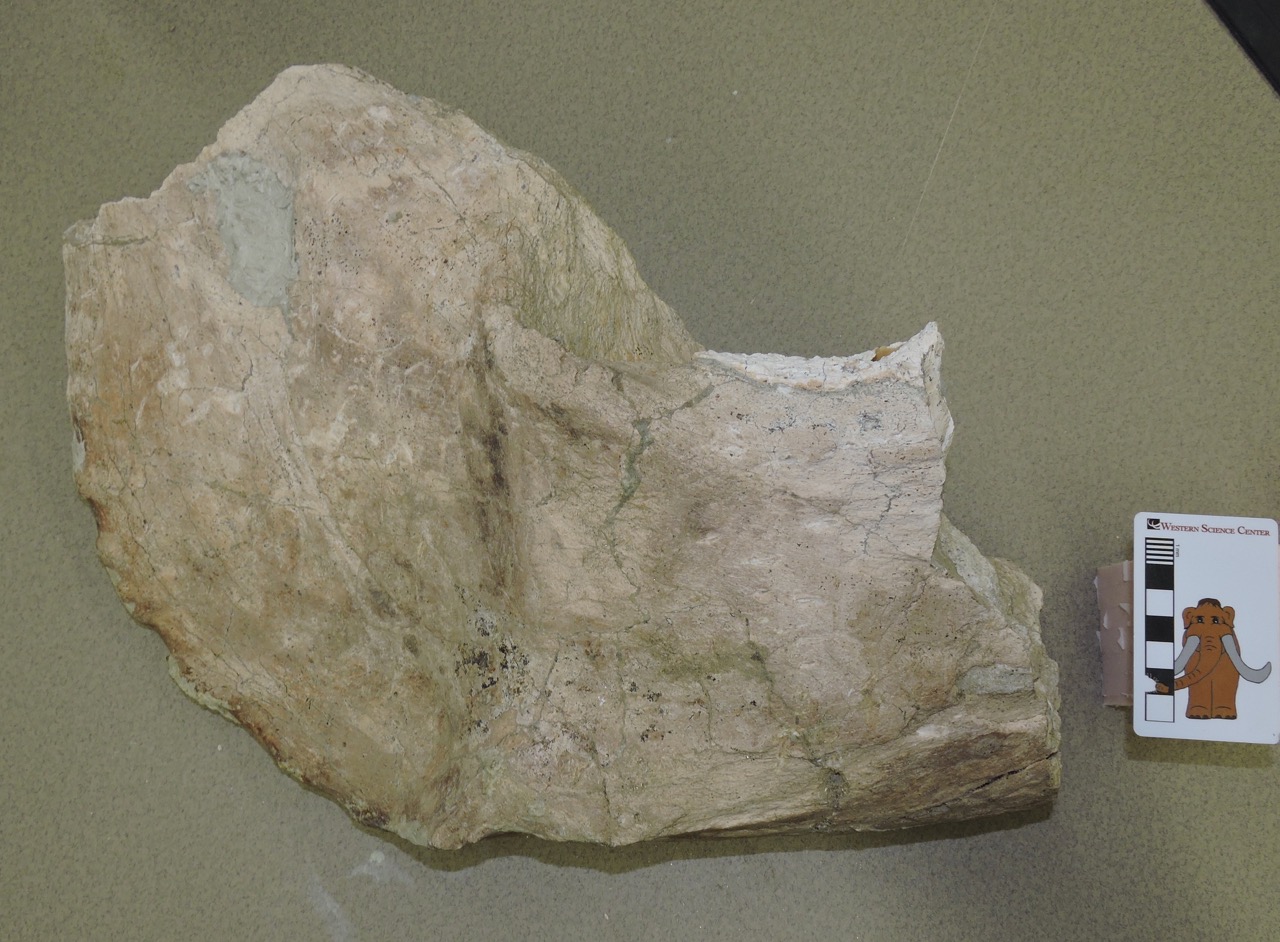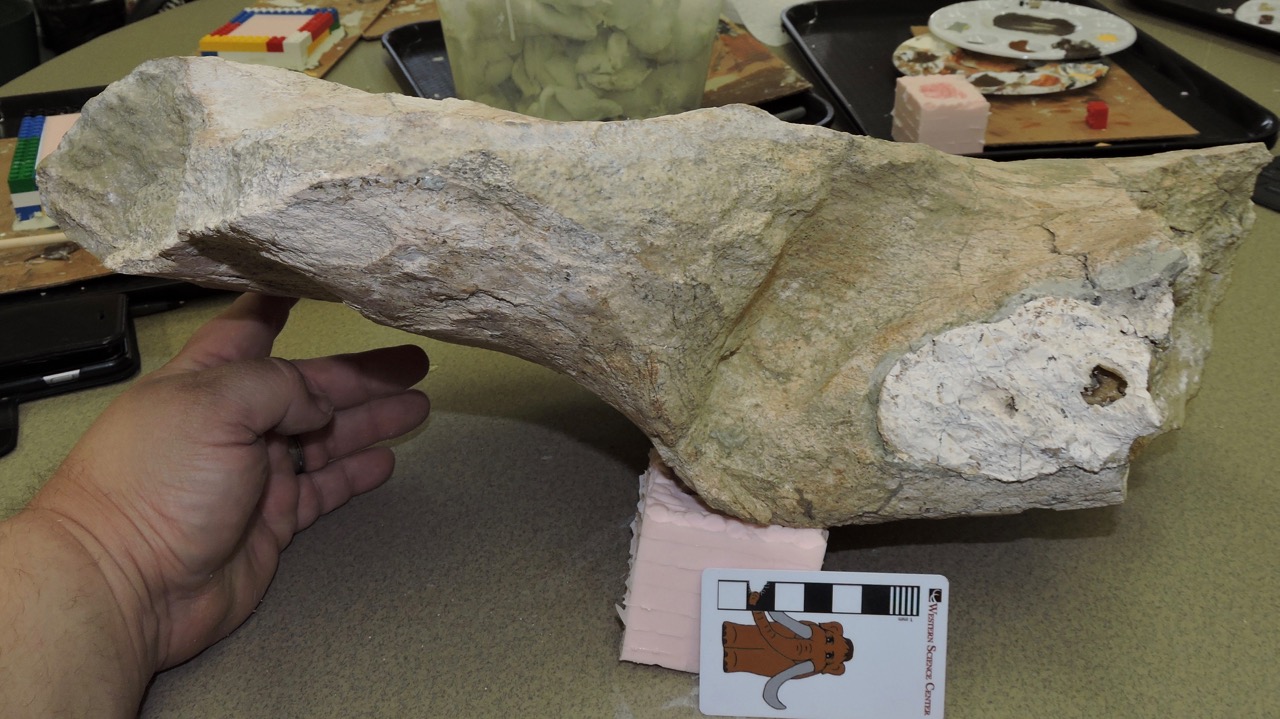 As we build up to our new exhibit opening, I'll continue the Month of Mastodons with a partial lower jaw.This is the back end of the left dentary, seen in lateral view with anterior to the left. The front half of the bone is missing, as are the coronoid process and condyle that should be located at the posterodorsal edge (upper right in the photo). The tooth crown is also broken. Below is a medial view of the same bone:
As we build up to our new exhibit opening, I'll continue the Month of Mastodons with a partial lower jaw.This is the back end of the left dentary, seen in lateral view with anterior to the left. The front half of the bone is missing, as are the coronoid process and condyle that should be located at the posterodorsal edge (upper right in the photo). The tooth crown is also broken. Below is a medial view of the same bone: And here's the dorsal view:
And here's the dorsal view: In this view the broken tooth is more clearly visible. Even though the crown is broken off, the distinctive mastodon tooth shape is clear.Unlike the vast majority of mastodons in the Western Science Center collections, this jaw is not from Diamond Valley Lake. Instead, it was collected from the Grizzly Ridge section of Murrieta, about 20 km southwest of Diamond Valley Lake (still in Riverside County). This specimen came in as part of a mitigation project, and unfortunately included almost no data except for the locality name. Both early and late Pleistocene deposits are known from Murrieta, so we're not yet sure of the age.We have not yet begun preparation of this specimen, but a quick survey indicates that a substantial part of the skeleton was recovered, including at least some vertebrae, numerous ribs, multiple limb elements, and several tusk fragments. We're hoping to prepare the specimen over the next year or so in our new Exploration Station prep area in our main exhibit gallery. The dentary fragment will also be on exhibit during Valley of the Mastodons, opening to the public on August 5.
In this view the broken tooth is more clearly visible. Even though the crown is broken off, the distinctive mastodon tooth shape is clear.Unlike the vast majority of mastodons in the Western Science Center collections, this jaw is not from Diamond Valley Lake. Instead, it was collected from the Grizzly Ridge section of Murrieta, about 20 km southwest of Diamond Valley Lake (still in Riverside County). This specimen came in as part of a mitigation project, and unfortunately included almost no data except for the locality name. Both early and late Pleistocene deposits are known from Murrieta, so we're not yet sure of the age.We have not yet begun preparation of this specimen, but a quick survey indicates that a substantial part of the skeleton was recovered, including at least some vertebrae, numerous ribs, multiple limb elements, and several tusk fragments. We're hoping to prepare the specimen over the next year or so in our new Exploration Station prep area in our main exhibit gallery. The dentary fragment will also be on exhibit during Valley of the Mastodons, opening to the public on August 5.
